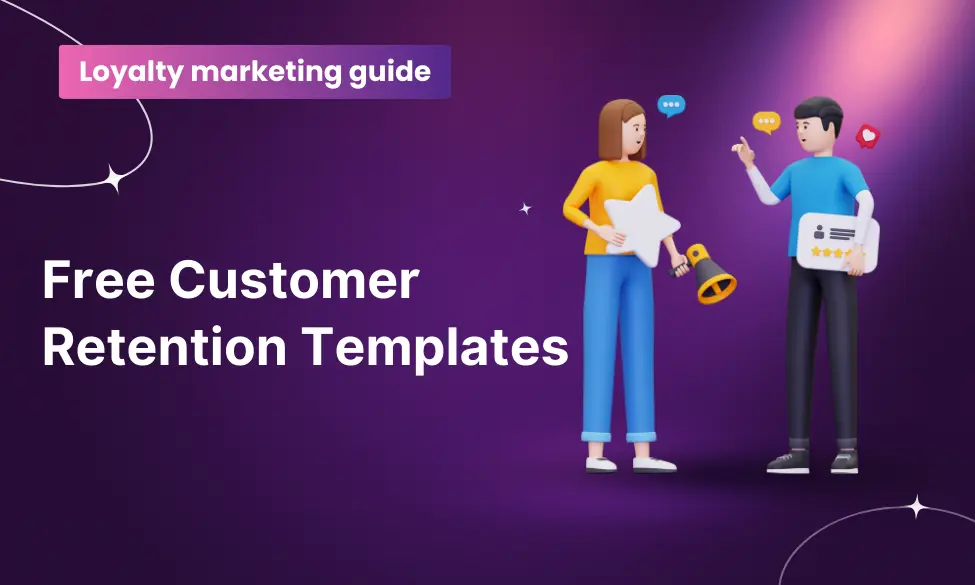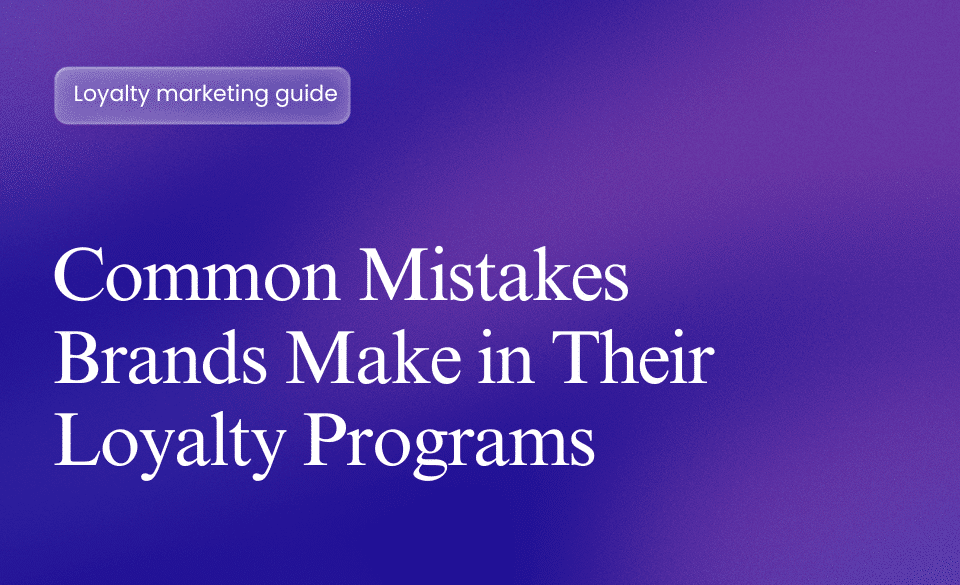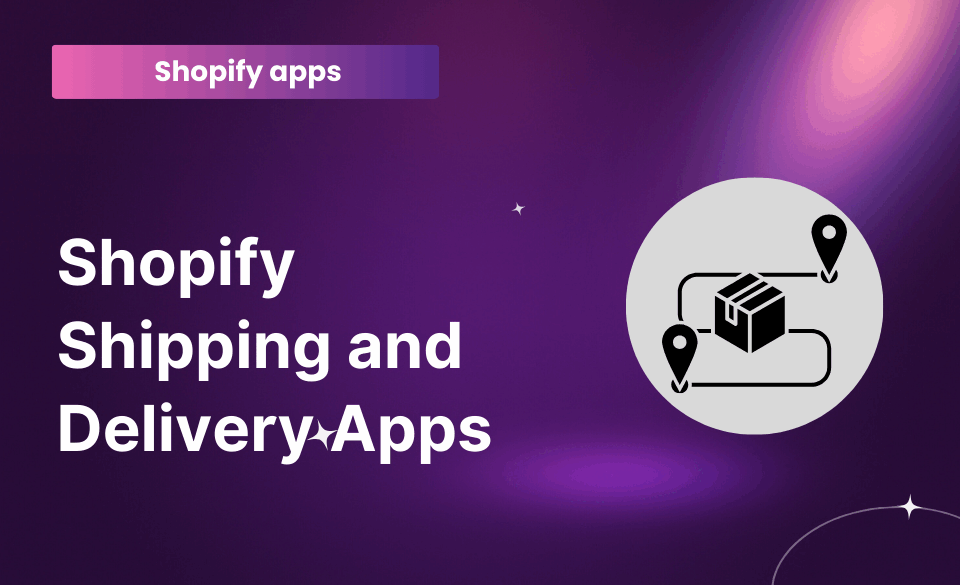
12 Membership Acquisition Strategies for Shopify Stores in 2024
12 August, 2024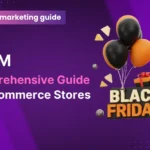
BFCM 2024: A Comprehensive Guide for E-commerce Stores
23 August, 2024Retaining customers is more important than ever in today’s cutthroat economy. Developing a well-organized customer retention plan is one efficient approach to do this. To help you get started, we’ve curated a collection of four free customer retention templates that you can easily adapt to your business.
What Is Customer Retention?
Customer retention is a company’s ability to turn customers into repeat buyers and prevent them from switching to a competitor. Imagine you have a new friend who really likes to play with you. Customer retention is like keeping that friend happy so they want to play with you.
Customer retention is a cornerstone of business success with two main benefits:
- Cost-effective growth because acquiring new customers is typically more expensive than retaining existing ones.
- Increased Customer Lifetime Value (CLTV) because loyal customers spend more over time.
Why Use Customer Retention Templates?
For businesses to develop plans to keep current customers, customer retention templates are standard documents or outlines that they can use. It has several benefits:
- Streamlined processes because templates provide a structured approach to customer retention efforts.
- Consistent execution to ensure a unified brand voice and message across all customer interactions.
- Easy customization to fit specific campaigns or customer segments.
- Time-saving and effort.
Now we will review four templates you may use in your own company to improve customer retention.
Template 1: 7 HubSpot Free Customer Retention Templates
HubSpot offers seven free downloadable resources for customer retention, such as:
- Customer profile templates to build customer profiles for your marketing, sales, and customer service teams.
- Abandoned cart recovery templates to identify improvement opportunities and strengthen customer retention.
- Customer satisfaction survey templates are resources to help you engage and delight your customers
Here are the 5 steps you need to take to get to and use HubSpot’s 7 free templates:
Step 1: First, review HubSpot’s template set.
Step 2: You may then choose the template you want to apply. For instance, we go for “Customer profile templates.”
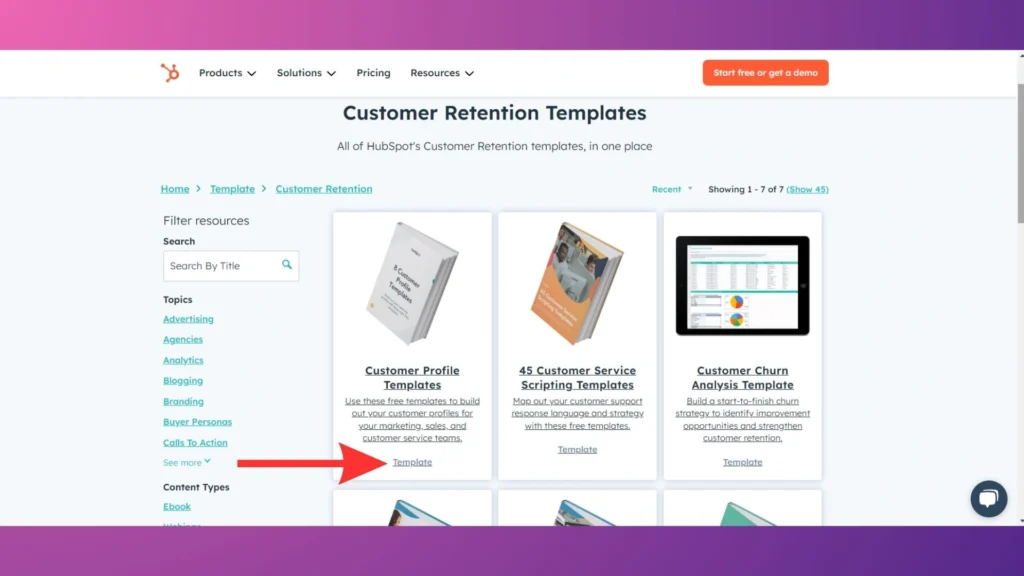
Step 3: Click the “Download Now for free” button to be sent to the template you selected’s landing page.
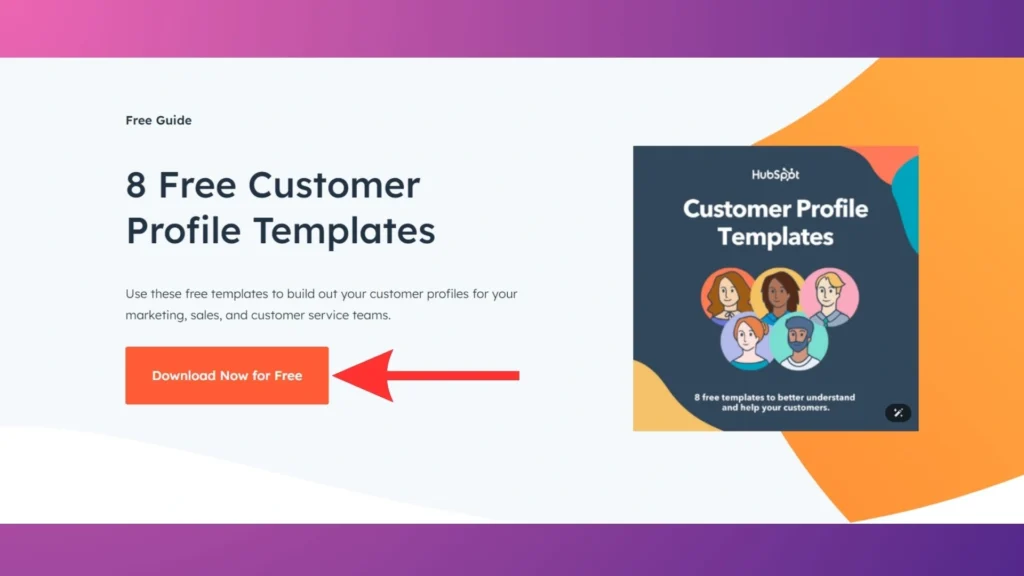
Step 4: HubSpot will prompt you to provide your email and then keep supplying the required basic information.
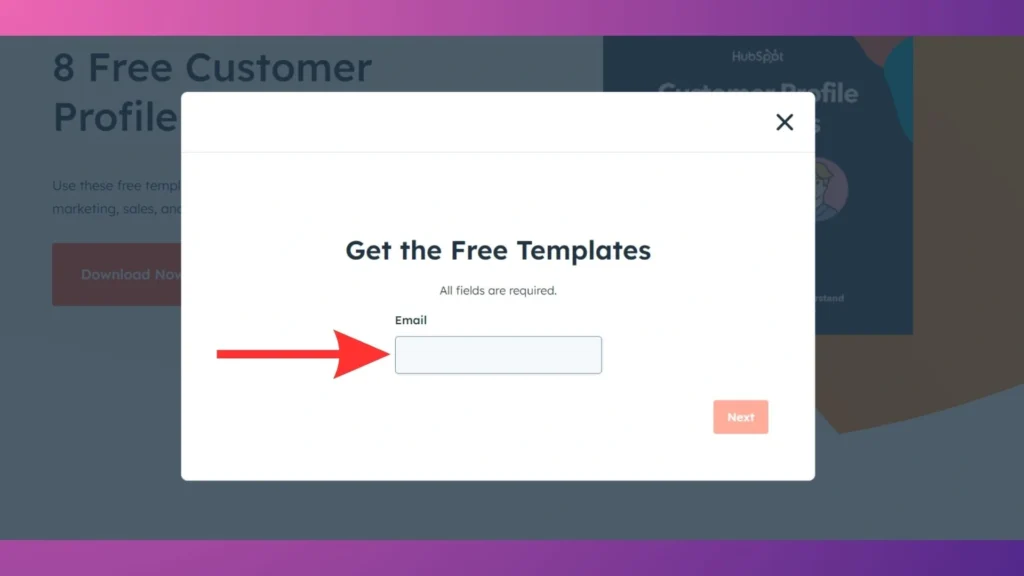
Step 5: At last, your email will get the chosen customer retention templates. Download the file and apply it.
For more options, you should purchase from the HubSpot Template Marketplace. Depending on your HubSpot version, you can make different templates. This can also change how you let different people share and view things.
Template 2: Free Customer Retention Forms From Cascade Strategy
Cascade Strategy offers free customer retention templates for specific industries, from technology to healthcare. These templates focus on customer retention with major KPIs. As you can see in the image below, it is ideal for visualizing progress.
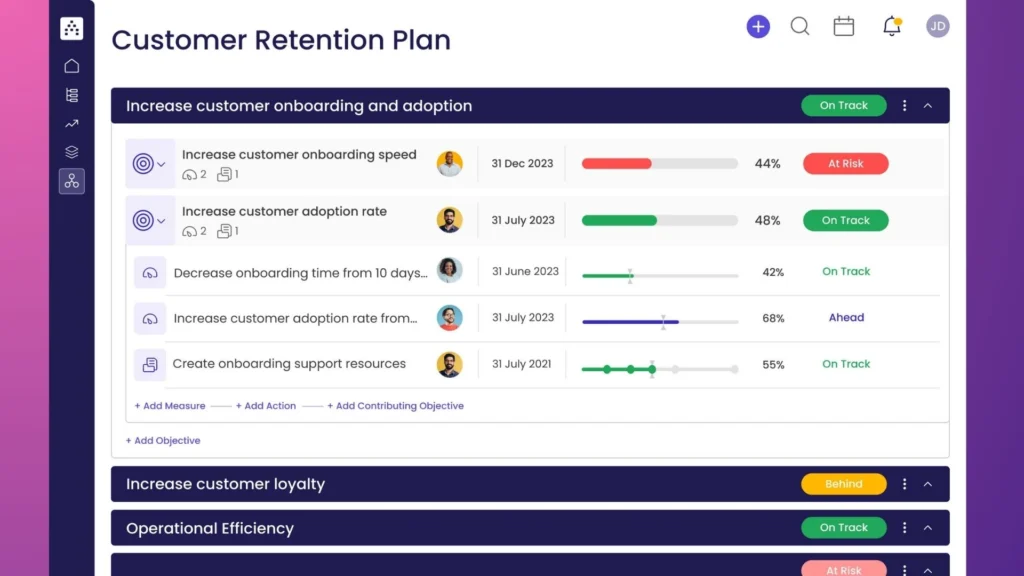
However, it will be a little harder to use their free template because you need to use a work email to create an account.
Then you can open the Library of Cascade Strategy Templates. Once you have a Cascade account, click “Use template” to find the template you want to use.
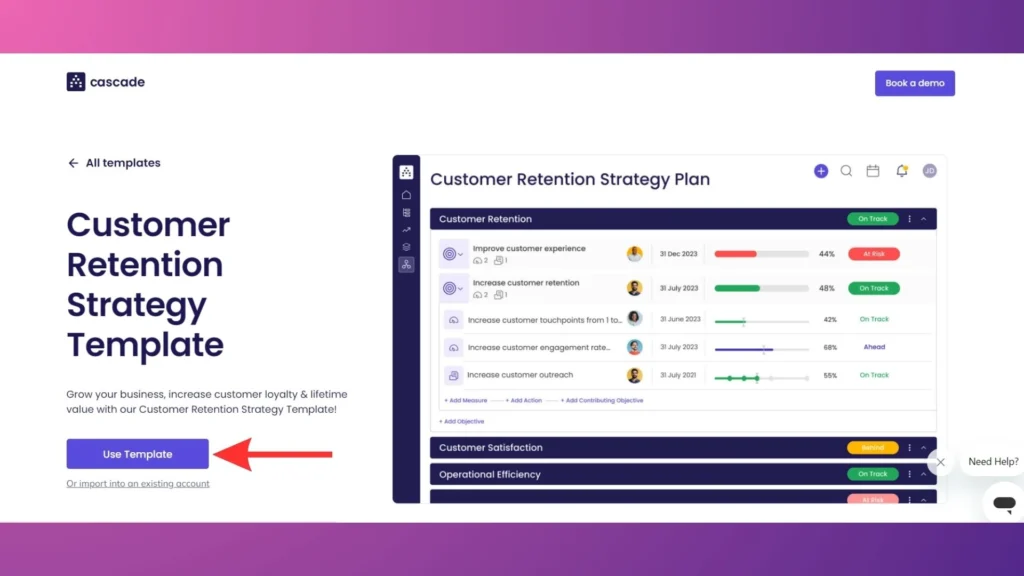
Template 3: Free Customer Retention Forms From LarkSuit
The customer retention form from LarkSuit is a strong tool for companies that want to learn more about their loyal customers. In our opinion, LarkSuit’s templates are not as intuitive as the templates Cascade Strategy offers. But LarkSuit’s templates still stand out with the following key features:
- Comprehensive data analysis of customer data, including subscription details, retention periods, and churn reasons.
- Visualizations of data are shown in a way that is easy to understand. It is easy to spot patterns and trends.
- Customization templates to fit the specific needs of different businesses.
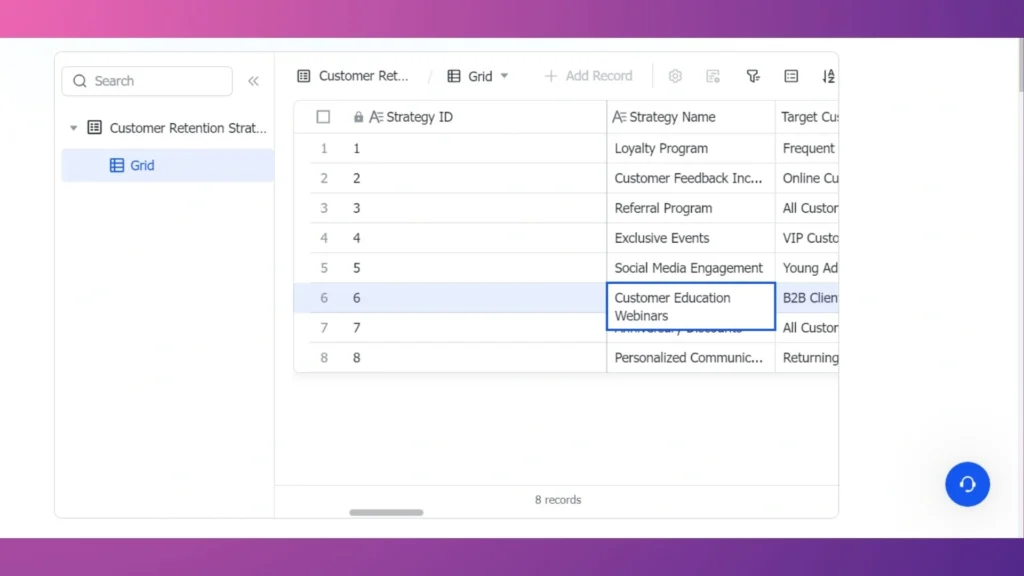
Follow these few steps to get started with Lark templates:
Step 1: Access the LarkSuit’s customer retention strategies templates.
Step 2: Click “Use this template” in the top right corner, and then LarkSuit will ask you to create an account.
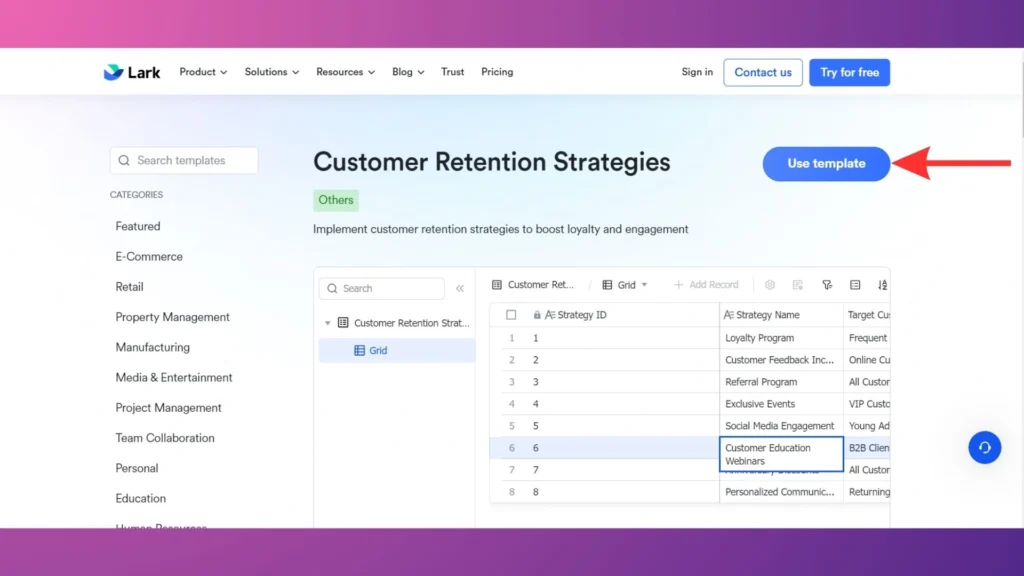
Step 3: Once you have signed up for Lark, you will be taken to the Customer Retention Strategies section of Lark Base. Then you can copy the Customer Retention Strategies to your workspace.
Step 4: Change the fields of the template to fit your needs.
Template 4: Free Customer Retention Form On Excel From Smartsheet
The main benefit of using a customer retention template in Excel is that it is cost-effective because it eliminates the need for expensive software or consultants. Also, in collaboration, multiple team members can simultaneously access and work on the template.
Smartsheet has a free Excel template for keeping customers. These forms help you keep track of measures for customer trust and growth. If you want to download it, just click here.
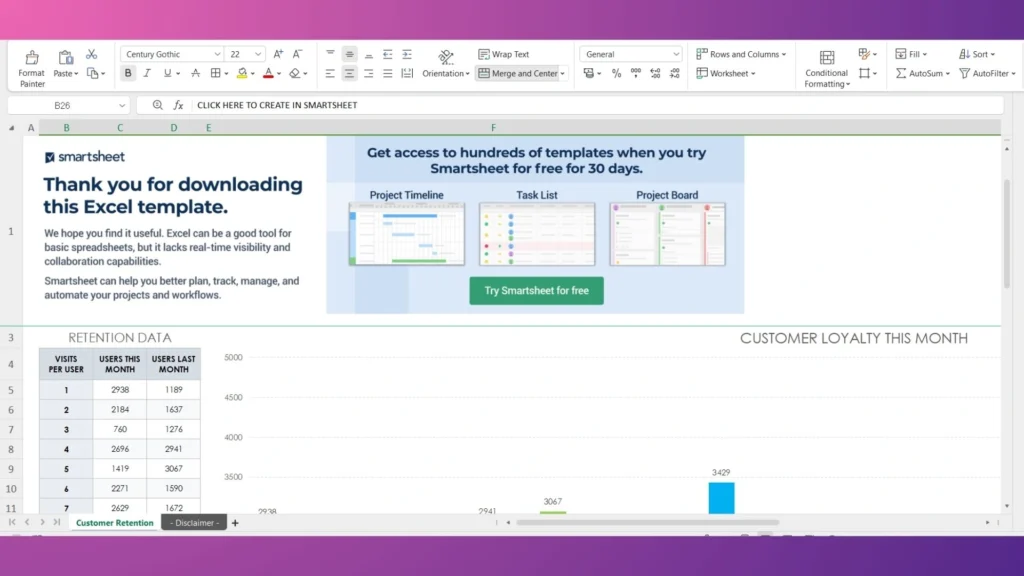
How To Create Your Customer Retention Templates Using ChatGPT?
When using ChatGPT to create multiple templates, you will have options. It allows you to experiment with different formats and styles. Also, through feedback and refinement, you can improve the template until it perfectly aligns with your needs.
To create your customer retention forms using ChatGPT, you should send a prompt. This is any piece of text that you may input into ChatGPT to get a precise response. The response is more accurate if the question is more specific.
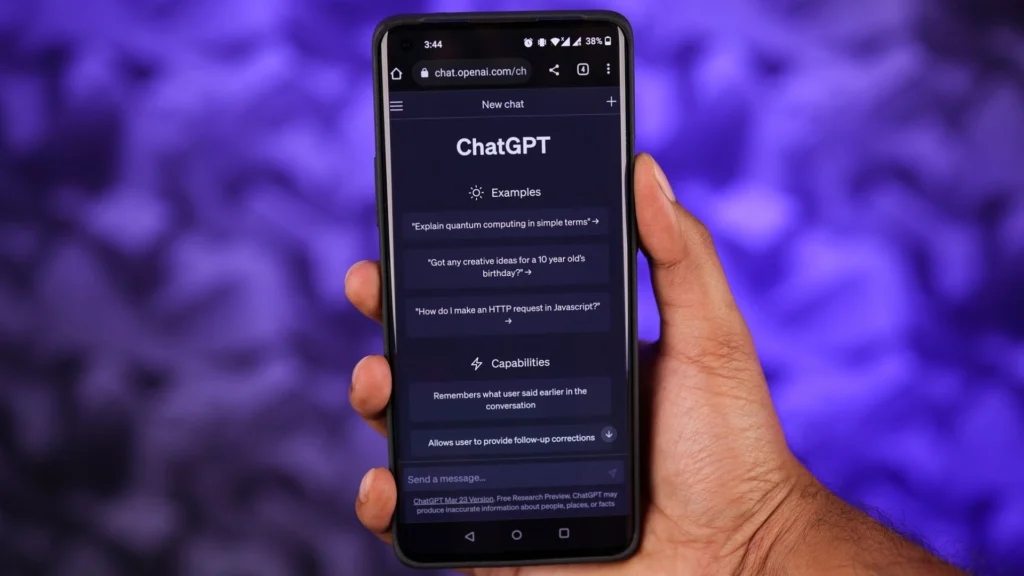
To give you an idea, we will instruct you to create effective prompts for ChatGPT:
Example Prompt To Create Templates Using ChatGPT
NOTE: You can customize or add sections based on your specific needs in the italicized sections below.
| Create a comprehensive customer retention template for an e-commerce business. The template should be detailed and include all necessary information sections. Here are the key elements I want included: 1. Introduction – Purpose of the customer retention strategy. – Overview of the goals and objectives. 2. Customer Segmentation – Criteria for segmenting customers (e.g., purchase history, frequency, average order value). – Description of each customer segment. 3. Retention Goals and KPIs – Specific, measurable retention goals. – Key performance indicators (KPIs) are used to track progress (e.g., retention rate, customer lifetime value, and repeat purchase rate). 4. Communication Plan – Types of communication (e.g., email, SMS, social media). – Frequency of communication. – Personalized messaging strategies. 5. Loyalty Programs – Description of the loyalty program structure (e.g., points system, tiered rewards). – Details of the rewards and benefits. – Enrollment process and promotion strategies. 6. Customer Feedback – Methods for collecting customer feedback (e.g., surveys, reviews, social media monitoring). – Process for analyzing and acting on feedback. – Plan to close the feedback loop with customers. 7. Content Strategy – Types of content to engage and retain customers (e.g., blog posts, tutorials, newsletters). – Content distribution channels. – Schedule for content creation and publishing. 8. Promotional Campaigns – Types of promotional campaigns (e.g., special offers, discounts, holiday promotions). – Calendar of promotional events. – Measurement of campaign effectiveness. 9. Customer Service Excellence – Standards for customer service. – Training programs for customer service representatives. – Channels for customer support (e.g., live chat, phone, email). 10. Retention Metrics and Analytics – Tools and methods for tracking retention metrics. – Regular reporting schedule. – Actionable insights from data analysis. Please provide a detailed template incorporating these sections, ensuring it is clear, actionable, and tailored to <<your business type>>. |
FAQs
How do I choose the right customer retention template for my business?
To choose the best customer retention template, you should think about:
- Identify key metrics such as customer lifetime value, churn rate, or repeat purchase rate.
- Understand your customer segments and their specific needs and preferences.
- Assess your resources as available time, budget, and personnel dedicated to customer retention efforts.
Let’s say you’re a subscription-based meal kit service. You probably would focus on customer happiness, retention rate, and loss research templates. Additionally, a template that includes sections for subscription management and derivative recommendations would be beneficial.
What are the key elements to include in a customer retention template?
The following important elements should be included in a complete customer retention template:
- Customer segmentation is based on demographics, behavior, or buy history.
- Customer journey mapping to identify pain points and opportunities for improvement.
- Customer lifetime value (CLTV) analysis.
- Customer engagement plans include personalized communication, loyalty programs, and exclusive offers.
- Customer feedback mechanisms to identify areas for improvement.
How often should I update my customer retention strategies?
We recommend updating your customer retention strategies at least quarterly. This will keep them relevant and effective in a changing market.
Conclusion
In this article, we examined four free customer retention templates you may rapidly use to your business. Feedback mechanisms, communication techniques, goal-setting and segmentation abound in these models.
Are you ready to have longer customer stays? One might want to design a whole incentive program using BON Loyalty. This loyalty app is a loyalty program designed for Shopify companies. It boasts more than just 18+ point-earning activities; it also offers infinite prizes.
Lindsey Nguyen is a Content Marketing Specialist at BON Loyalty, specializing in digital marketing and eCommerce. At BON Loyalty, she crafts content that empowers Shopify store owners to build and sustain thriving customer relationships through innovative loyalty programs. Her articles, often featured on the BON Loyalty blog, provide valuable strategies and insights that help businesses enhance customer loyalty and increase customer lifetime value.
